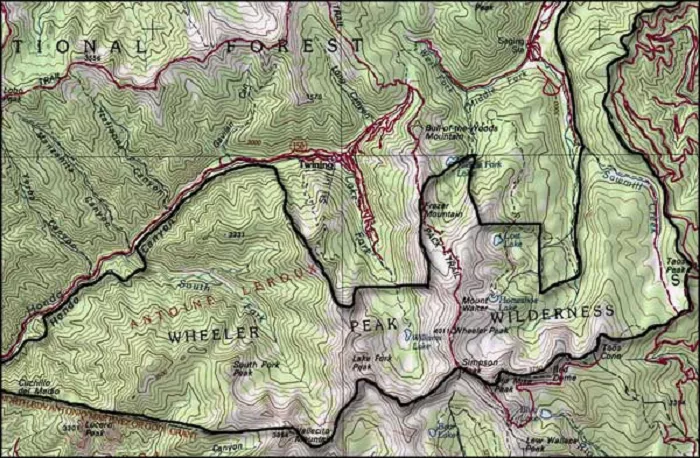Wheeler Peak stands as the highest point in New Mexico, offering both geographical prominence and recreational opportunities. Located in the northern part of the state, it is a focal point for hikers, climbers, and nature enthusiasts.
At an elevation of 13,167 feet (4,013 meters), Wheeler Peak is the pinnacle of New Mexico’s natural landscape. Situated within the Sangre de Cristo Mountains, it attracts adventurers from around the world. This article delves into Wheeler Peak’s location, geological significance, recreational opportunities, and the surrounding natural beauty.
Geographical Location
Wheeler Peak is nestled in Taos County, approximately 15 miles northeast of the town of Taos. It lies within the Carson National Forest, specifically in the Wheeler Peak Wilderness area. The peak is part of the Sangre de Cristo Mountains, the southernmost subrange of the Rocky Mountains. Nearby, the Taos Ski Valley offers winter sports and serves as a gateway for those embarking on the Wheeler Peak Trail.
Geological Significance
The Sangre de Cristo Mountains, where Wheeler Peak is located, are among the oldest in the Rockies. The region’s geology features ancient crystalline rocks, providing valuable insights into the Earth’s geological history. Hikers and geologists alike can observe various rock formations and geological features along the trails leading to the summit.
Recreational Opportunities
Hiking and Climbing
Wheeler Peak is accessible via several hiking trails, with the Williams Lake Trail being the most popular route. This trail begins at the Taos Ski Valley and ascends through diverse alpine environments, culminating at the summit. The hike is challenging, requiring proper preparation and acclimatization due to the high elevation.
Wilderness Area
The Wheeler Peak Wilderness encompasses over 19,600 acres, offering a pristine environment for backpacking, wildlife observation, and solitude. The area is home to diverse flora and fauna, including aspens, firs, elk, and bighorn sheep. Preservation efforts ensure that visitors can experience the wilderness as it has existed for centuries.
Flora and Fauna
The varying elevations of Wheeler Peak create distinct ecological zones, each supporting unique plant and animal life. At lower elevations, forests of ponderosa pine and aspen dominate, while higher elevations feature alpine meadows and tundra. Wildlife such as elk, mule deer, bighorn sheep, and numerous bird species inhabit the area, making it a haven for wildlife enthusiasts.
Conservation Efforts
Conservation of the Wheeler Peak area is crucial to maintaining its ecological integrity. Efforts focus on protecting native habitats, managing recreational use, and preserving the natural beauty that attracts visitors worldwide. Visitors are encouraged to follow Leave No Trace principles to minimize their impact on the environment.
Nearby Attractions
Beyond Wheeler Peak, the surrounding region offers additional attractions:
- Taos Pueblo: A UNESCO World Heritage Site, this ancient pueblo provides cultural insights and historical significance.
- Rio Grande Gorge Bridge: Offering breathtaking views of the Rio Grande Gorge, this bridge is a must-visit for photographers and sightseers.
- Carson National Forest: Expansive forests surrounding Wheeler Peak offer numerous trails, camping sites, and opportunities for outdoor recreation.
Conclusion
Wheeler Peak stands as a testament to New Mexico’s natural beauty and geological history. Its challenging trails, diverse ecosystems, and recreational opportunities make it a destination for adventurers and nature lovers alike. Respecting the environment and practicing sustainable tourism ensures that future generations can continue to appreciate and explore this remarkable peak.

